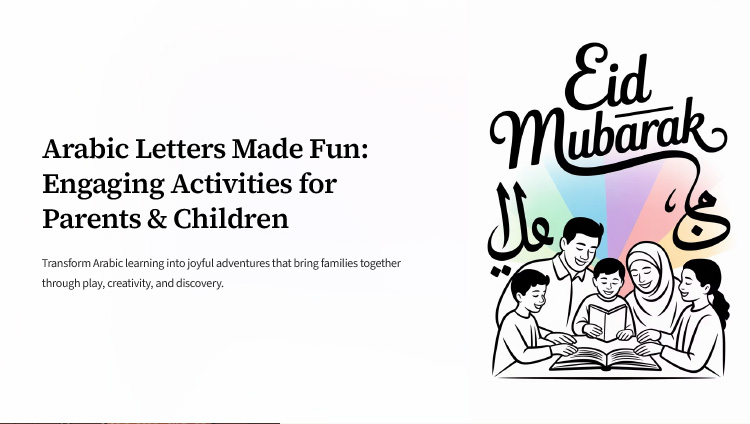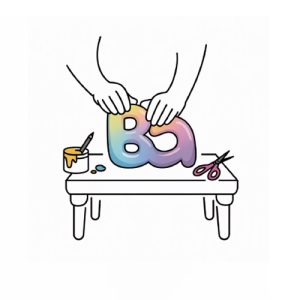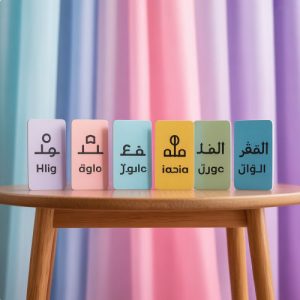

Hide colourful cards with Arabic letters around your home. Each time your child finds a card, they say the letter and its sound aloud.
Perfect for Arabic A children to playfully connect speech and letters, and Arabic B children to link movement with sounds.

Create hopscotch squares labelled with fatha, kasra, damma.
Say a word; your child jumps to the vowel sound they hear.
Transforms abstract vowel marks into lively, memorable games.

Shape Arabic letters using clay, sand, or string. Tactile activities help children, especially Arabic B learners, transform unfamiliar shapes into friendly, memorable forms.

Gather household items starting with the same letter, like ball, banana, book.
Children sort objects and say the words aloud, sharpening listening skills.
Shows that Arabic words surround them in daily life, making learning relevant.

A white duck cried next to a big house.
Children enjoy laughter whilst practising sounds and sentence rhythm. This approach lightens learning for Arabic A families and introduces rhyme playfully for Arabic B learners.

Personalise flashcards with names of family members, pets, or favourite places. This makes letters meaningful and motivates
children to learn words that truly matter to them.

Combine movement, touch, sound, and laughter to engage different ways of learning effectively
Make Arabic letters approachable and enjoyable, removing fear and building positive associations
Encourage parents to participate, creating joyful shared learning moments that strengthen bonds

Maintain brief, playful sessions to preserve your child’s interest and enthusiasm
Acknowledge small achievements to boost motivation and build lasting confidence
Employ colourful visuals and familiar objects to make abstract concepts concrete
Adapt to your child’s unique learning style by varying approaches and methods

Making Arabic letters active, colourful, and connected to home life transforms learning into a joyful adventure. From recognition to fluency, children thrive when learning feels like play.
Let’s inspire our children to love Arabic, one fun activity at a time! When we combine creativity with learning, we open doors to lifelong appreciation for this beautiful language.